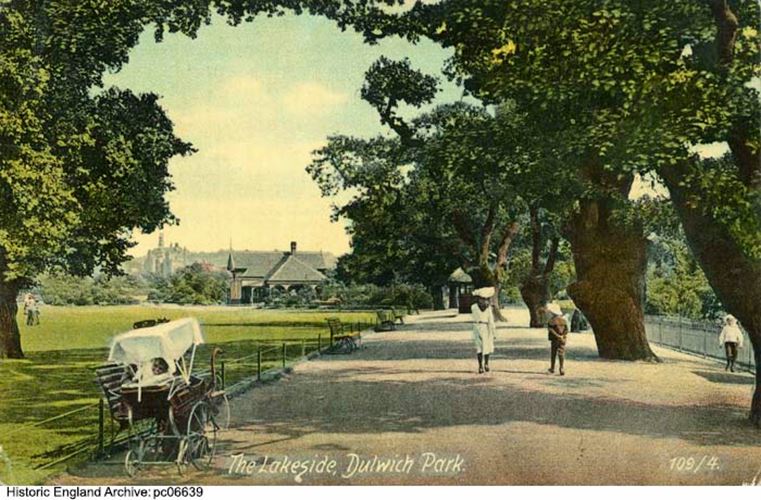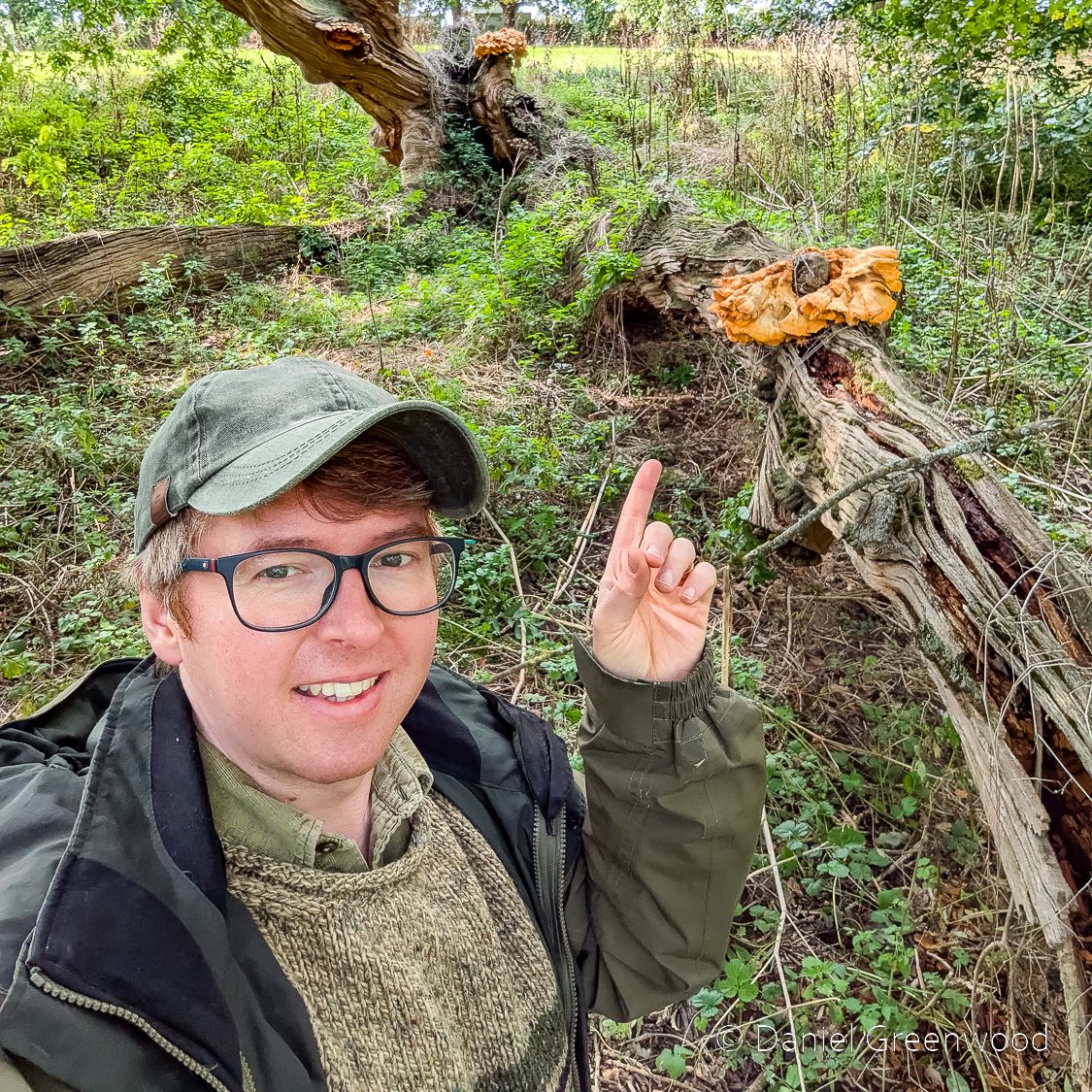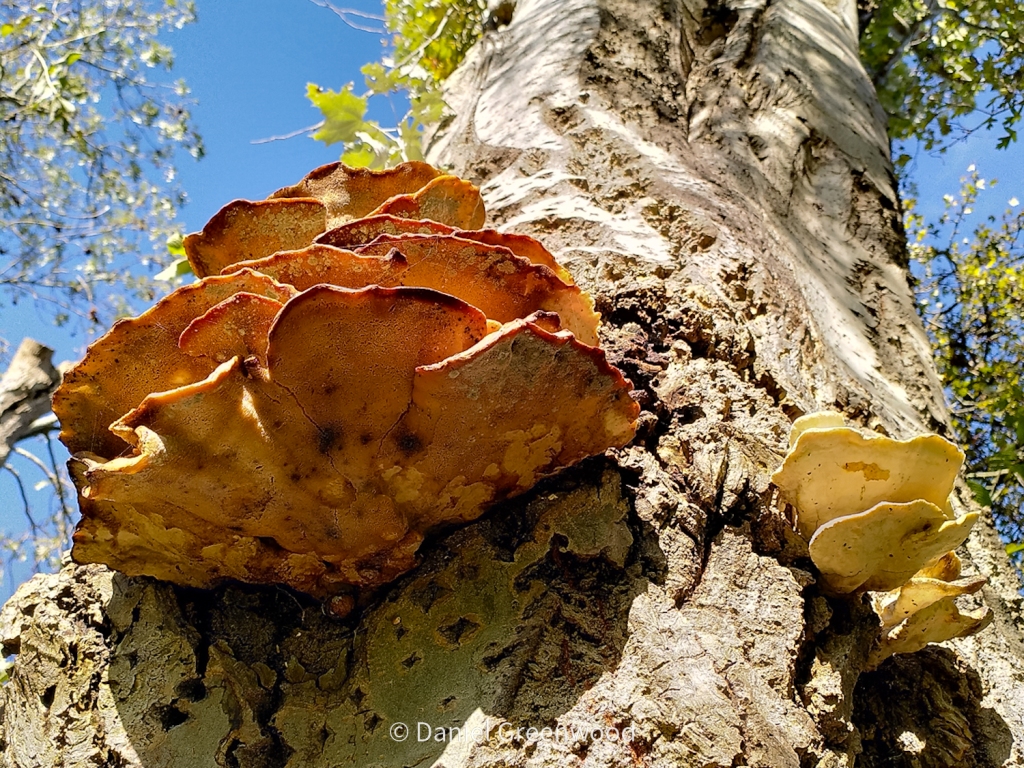Dulwich Park, Sunday 5th November 2023
On Sunday 5th November I led a fungi walk for the Dulwich Society (thanks to Jeremy Prescott and David Beamish). In 2022 I led a fungi walk there, having led a number of nature walks in the past.
Dulwich Park is a place that has a lot of personal meaning for me. It’s where my Dad taught me to play football as a child, taught my sister to ride a bike, and where I used to hang out as a teenager.

It’s a very popular public park in the London Borough of Southwark. It was opened as a public park in the 1890s having been farmland for many centuries before that. Its significance ecologically is its tree diversity, old/veteran oak trees, wetlands and hedgerows.

Above is the least ecologically dynamic part of the landscape but great for football and frisbee!
There were two big surprises on this walk, and I’ll begin with one of them:






I gasped when I saw magpie inkcap growing on the outskirts of the park. I’ve never seen it in London and only occasionally in Sussex. It is thought to be rare outside the south of England. I wonder if it has been accidentally brought in because the mushrooms were growing in woodchip, which is a commonly transferred material.



I’m going to go through the brackets now. I think this is chicken of the woods growing on aspen, a tree that is in some decline or states of decay. It’s actually the first one I’ve seen this year, which is odd!



This bracket has been on my mind as I’ve seen it elsewhere in Dulwich in recent weeks and once again it was growing on poplar. I think it is probably in the family Perenniporia.



False turkey tail was putting on a very nice show. It has no pores underneath and is not hairy so that can help to differentiate from hairy curtain crust, which does look similar.



There were a lot of Ganoderma brackets on turkey oak trees in Dulwich Park. I’ve been keeping an eye on this one for years. The tree is in very good health but I wonder how it’s faring structurally. The Council will be keeping an eye on that as I know they are proactive around tree safety.





This is probably Ganoderma resinaceum which is a parasitic species.


Beefsteak has not had a good a good year, I don’t think. In September 2022 it was on almost every older oak in Dulwich Wood, whereas this year it has struggled, probably due to the hot September. The picture on the left has a rather soggy looking beefsteak higher up in the tree. The picture on the right is a beefsteak at the base of an old oak.

Shaggy parasol is fairly frequent at the edges of Dulwich Park but is usually eaten by slugs before they can mature.

I think this is probably crystal brain, though I am quite relaxed about identifying jelly fungi!

It’s a blurry pic but nice to see an agaricus growing in a fenced-off lawn area. You can see the sort of square shape as the cap develops, typical of agaricus. In its pastoral past these mushrooms would have been extremely common in any grazing land.



I was stumped by this species, and saw a similarity with deceivers. I file this under ‘little brown mushroom’ even though it was actually about 7 inches long.





Bonnets are always a joy and this was the most photographed mushroom community. I haven’t done much work on identifying bonnets (Mycena) over the years so will have to take some time to do that with the cache of photos I have.

The star of the show was found by a child called Maggie, whose mum said that she had found what looked like porcini (Boletus edulis). I couldn’t believe it but asked Maggie to show me – and she was absolutely right. The first ceps/porcini/pennybun I’ve ever seen in London. Thank you, Maggie, and well done!
Thanks for reading.


Leave a comment